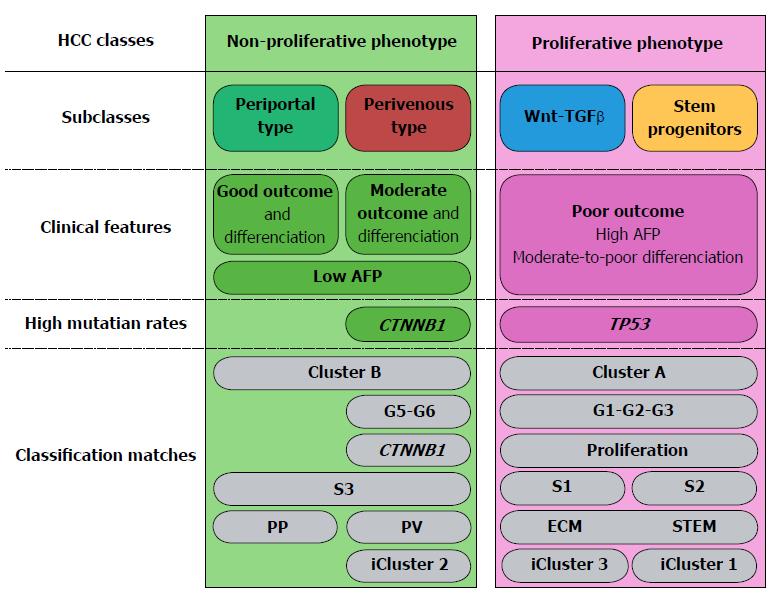Copyright
©The Author(s) 2018.
World J Gastroenterol. Oct 28, 2018; 24(40): 4536-4547
Published online Oct 28, 2018. doi: 10.3748/wjg.v24.i40.4536
Published online Oct 28, 2018. doi: 10.3748/wjg.v24.i40.4536
Figure 1 Toward a unifying molecular classification of human hepatocellular carcinomas.
Two major hepatocellular carcinoma (HCC) classes, non-proliferative and proliferative can be subdivided into four subclasses. Non-proliferative, well-differentiated HCCs comprise two subclasses with mutually exclusive metabolic features and regulatory signaling pathways: Periportal-type (HNF4α-driven) and Perivenous-type (β-catenin-driven). Proliferative, moderately-to-poorly differentiated HCCs comprise two subclasses: Wnt/TGF-β (regulated by interplays between Wnt and TGF-β ligands, leading to expression of extracellular matrix glycoproteins) and Stem/Progenitors (showing features of liver progenitor cells). Major clinical features, gene mutations and matches between the different HCC classifications are indicated. HCC: Hepatocellular carcinoma; TGF-β: Transforming growth factor beta; AFP: Alpha-fetoprotein; CTNNB1: Gene encoding β-catenin; TP53: Gene encoding p53; PP: Periportal; PV: Perivenous; ECM: Extracellular matrix; STEM: Stem/progenitor cells.
- Citation: Désert R, Nieto N, Musso O. Dimensions of hepatocellular carcinoma phenotypic diversity. World J Gastroenterol 2018; 24(40): 4536-4547
- URL: https://www.wjgnet.com/1007-9327/full/v24/i40/4536.htm
- DOI: https://dx.doi.org/10.3748/wjg.v24.i40.4536









